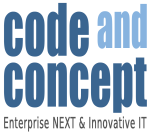System Integration
People/ Processes/ Systems/ Infrastructure
The interaction of different systems and technologies
Good system integration is an orchestra – we help to direct!
In the modern IT world a constant change takes place, with ever new buzz words and always new technologies. Be it “virtualization”, “containers”, “microservices” or a “hyperconverged infrastructure”: every technology brings with it new hardware or software systems that have to work together – somehow successfully – and without any errors. On top of that, the new has to be integrated into existing structures again and again – this is what we mean by: system integration.
Systems integration has to cope with a sheer number of challenges, not only with new technologies in infrastructure and systems, but also with processes and people becoming more and more important factors. Each change to one of the four aspects requires extensive checks in the areas of interface, communication, workflow, functionality, and security / privacy.
We accompany you in system integration in your organization with know-how and experience in all four areas. We pay particular attention to the factors human and process, because we know that in every value chain, people stand in many important places! – which means that lived, not yet digitized processes must not be endangered by one-dimensional system integration. We do system integration plus.
Infrastructure ↔ Systems
What is going on where? Is it good like that? What’s better?
What we call “systems” comes up – and uses – an infrastructure. The infrastructure traditionally includes nets, power, cooling, server hardware, storage, and so on – all “things that can be hit with a hammer”. The classic framework must be greatly expanded in the software field today by virtue of new technologies to virtualization software – such as VMware, Hyper-V and KVM – to vSAN, Ceph, SDNs and hyper-converged systems, and depending on the perspective of container infrastructure Basis of eg Docker. And from our point of view infrastructure also includes the people who run it, because at this level too short a staffing later in time to collapse than in other shifts, but often more dramatic.
As you can see, the complexity is increasing – not just on the infrastructure side, but especially in system integration.
We support you conceptually and with experience in the planning and optimization of your system landscape and in the conception of migration and modernization projects, and support you in the implementation ..
Systems ↔ Processes
Which system supports which process? Is everything set up optimally?
The various systems in an IT landscape all fulfill one task in the digital underpinning of real and lived processes, from communication such as e-mail to complex workflows and production control. When everything is optimally set up and coordinated, they do it effectively, efficiently and safely. But due to the complexity of the systems and their interfaces, attacks from inside and outside, and last but not least due to constant lack of resources, it is seldom possible to operate all systems “optimally”. Not only running systems have to be supervised, but also failures and redundancies have to be considered. Critical processes require higher-availability systems.
We support you in analyzing your system landscape and planning your system layout not only along the requirements of the processes, but also the various requirements of the systems themselves. We help you to design and plan your optimal infrastructure – whatever that means in your case like: highly available, encapsulated services with dedicated subservices or highly centralized backend services with dynamic load. Of course, we also support migration and optimization planning here.
Processes ↔ People
The commonality of all environments is man!
It does not matter what kind of technology is used in the infrastructure, which software underpins the systems, and how we design and implement work processes. All landscapes have human beings in common. We see people not only as part of the three levels of infrastructure, systems and processes, but as a separate aspect of system integration. Only an environment of systems and infrastructure that works without human interface can remove people from the equation – and that environment still needs to be invented. People live processes, people operate and manage systems, people design and operate infrastructure. Good system integration takes into account that humans are not machines, that people (generally) do not have time, and that people are at the beginning and end of all aspects of an IT landscape.
It does not matter what kind of technology is used in the infrastructure, which software underpins the systems, and how we design and implement work processes. All landscapes have human beings in common. We see people not only as part of the three levels of infrastructure, systems and processes, but as a separate aspect of system integration. The environment still needs to be invented. People live processes, people operate and manage systems, people design and operate infrastructure. Good system integration takes into account that humans are not doing machines, that people (do not have time), and that people are at the beginning and end of all IT landscape.
